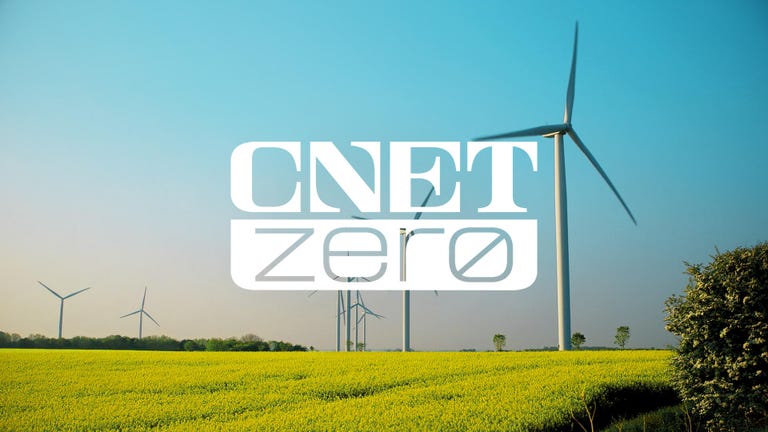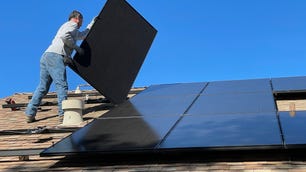Widespread access to solar power is vital to transitioning the US away from climate-warming fossil fuels and toward renewable energy. There’s a problem: Rooftop solar panels are expensive, with prices in the tens of thousands of dollars putting them out of reach for many Americans.
Newly expanded government programs, backed by $7 billion in grants announced Monday by the Biden administration, aim to close that affordability gap.

The programs are called Solar for All, and they’re intended to make clean energy accessible by offering free or low-cost rooftop solar panels or community solar access. Essentially, the programs provide a share in the power provided by a nearby solar facility.
Some states and communities have already had Solar for All programs, but the $7 billion in grants authorized by the Inflation Reduction Act and awarded this week by the US Environmental Protection Agency will allow for a national adoption of the model.
What is Solar for All?
Solar for All has been used as a bit of a catch-all term for a couple of different types of programs that support the switch to solar energy for low- to middle-income households.
No-cost and low-cost community solar are key parts of Solar for All since homeowners and renters alike can access solar energy through the expansion of solar farms.
Some people choose community solar because their home is too shaded for rooftop solar, a solar panel system is too expensive for their budget or simply because it might offer cheaper electricity bills.
Many community solar programs put aside a certain amount of their capacity for low- and middle-income customers, which is what makes community solar one of the tentpoles of Solar for All.
“Community solar is an important component because not everybody owns their home, particularly among under-resourced families,” said Ben Delman, communications director for Solar United Neighbors, a clean energy nonprofit. “These families may not own their own home and so can’t install solar directly, but they can still participate in community solar by buying or leasing a share of that project.”
The other function served by Solar for All programs is providing free rooftop solar panel systems to low- and middle-income households.
Solar panels can be prohibitively expensive, but solar energy is the cheapest source of energy. It’s the upfront equipment cost that’s impossible for a lot of people.
Solar for All is circumventing that altogether by setting aside funding for low-income households to get that solar energy generation free of charge.
Not every Solar for All program offers both community solar and free rooftop solar. One of the biggest state-level programs already operating in New York only supports community solar, for example. Reach out to your local provider to see what services they offer, if you’re eligible for the benefits and if there’s any space left in the program for new applications.
What the federal Solar for All funding means
Currently available Solar for All programs have been put together by state or local governments working together with utility and solar companies or organizations.
The funding for community solar or free solar panel systems in these places is limited in scale. Even if there’s a local program near you, it may very well have exhausted its funding on other applicants by now.
Now, $7 billion of federal funding from the Greenhouse Gas Reduction Fund is being partitioned between different grant seekers across the country. The Environmental Protection Agency will be in charge of releasing this money to 60 grantees who successfully made a case for running their own Solar for All program.
According to the EPA, the final distribution of money granted to the proposed projects was decided to provide optimal coverage across America’s geographic space and benefit the greatest possible number of low- to middle-income individuals.
“Many of the 60 selected Solar for All applicants have already begun supporting low-income and underserved communities through innovative programs that are already bringing clean, affordable solar energy to homes,” EPA Deputy Administrator Janet McCabe said. “With this new funding, Solar for All-selected applicants can launch thousands more projects like these throughout every state and territory across the country.”
The Clean Energy States Alliance projects that the federal program will result in an additional 2.9 gigawatts of solar capacity on the grid, creating $2 billion in savings for 711,000 low-income households over the next five years. The EPA projects that the investment will generate over $8 billion in savings for overburdened households over the entire lifetime of the program.
State-level Solar for All programs
Though the federal government’s Solar for All cash infusion means additional comprehensive state-level programs will start being funded in the coming months, there aren’t many programs at the state level at this time.
If you live in Illinois, New York or Washington, D.C., you may be eligible to apply to state Solar for All programs.
New projects will certainly be underway soon. 49 state-level grantees received a total of $5.5 billion, six grantees providing Solar for All programs on land governed by Native American tribal governments received a total of $500 million and five multi-state grantees received a total of $1 billion.
These new Solar for All providers will be operating in all 50 states, Washington, D.C., Puerto Rico and Guam. Keep an eye on the development of these programs: If you’re eligible to apply to them, you’ll want to get in on them as soon as possible to maximize your savings.
In addition, there are Solar for All programs across the country at the local level. Ask your local government officials, solar companies or nonprofit organizations for more information about Solar for All in your area.
See what solar incentives are available in your state
The interactive cost map below displays the average price, cost per watt and typical system size for a solar panel system in your state, according to data from FindEnergy.com. Prices shown don’t factor in tax credits. Certain states don’t have any FindEnergy solar data and are grayed out on the map.
Clicking on any of the states will take you to an in-depth explainer, where you can learn about what state- and federal-level solar incentives you can take advantage of with a solar panel system in your state.
Are you eligible for Solar for All?
Solar for All programs have different eligibility requirements depending on what benefit you are applying to receive. Community solar applications are often available for everyone, although space on the grid is set aside for low- and middle-income households.
If you live somewhere where the local Solar for All program offers free solar panel system installation, your eligibility hinges upon your household income.
For many existing programs offering free solar panel system installation, if you bring home less than 80% of the median income for your area (dependent on the number of people that live in your household), you qualify for a free solar panel system.
Income verification is an important part of the process to ensure that the right people are receiving the benefits, but it can also be a barrier to entry.
“The more steps you have, the higher likelihood that people are going to drop out,” said Delman. “That’s something we learned from our first programs, and we’re finding ways to streamline the process as much as possible.”
If you’re a retiree or don’t bring in any income, Solar for All benefits may still be available to you.
“The income guidelines that are based on household size only apply to those who receive income in the household,” said Alvin Jones, energy program specialist for the Department of Energy and Environment. “So if three people live in a household and only one receives an income we only use the figure that the income earner makes.”
If no one in your home receives an income, you can also complete a zero income affidavit, notarize it and fill out your application afterward.
Every program is different, and you should reach out to your local provider to find out if you qualify for access to a rooftop solar system.


